Growing currant bushes is a wonderful way to improve the aesthetics of your landscape with a hardy perennial while harvesting some delicious fruits at the same time. Currants come in several tasty varieties and are high in vitamins and minerals. Use these delightful berries for making jams and jellies, dried like raisins, or eaten fresh right off the bush!
Another great fruit-producing shrub to grow in your yard is a goji berry shrub!
Contributed by Jodi Torpey, author and Master Gardener.
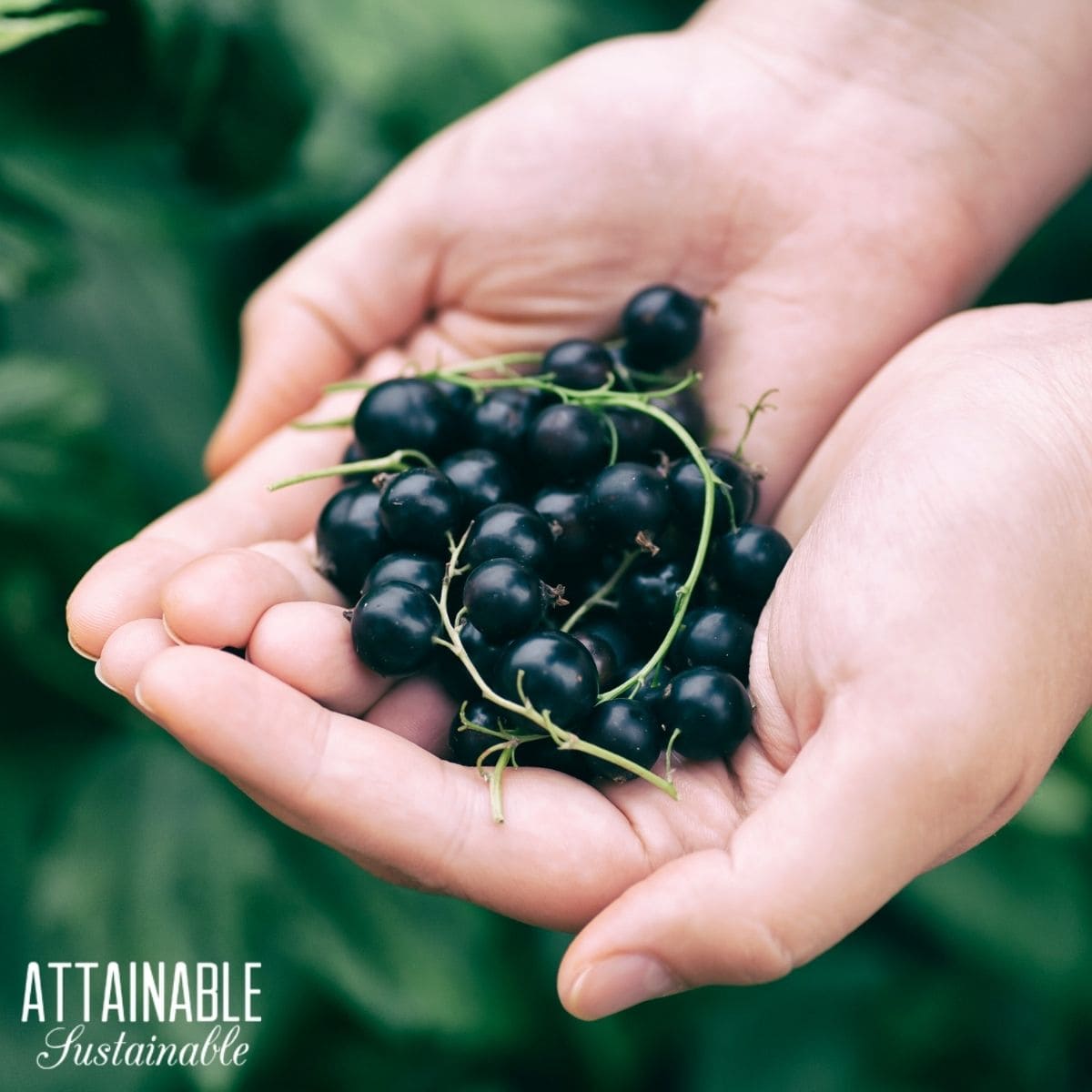
Growing currant bushes
Growing currant bushes
Currants grow on a hardy perennial shrub that flowers and produces small tasty fruits that people and wildlife all enjoy. Currants (Ribes spp.) are adaptable to most areas and are reliable fruit producers, especially for smaller landscapes.
In addition to the fruit, currant shrubs provide color, texture, shape, and interest in the landscape. Plant these tough shrubs as a single specimen near the edible garden, or in masses along a fence for a large fruit production.
There are several types of currant fruits to choose from that include small berries in colors black, red and white. Each has different characteristics that make it a better choice for a gardener’s specific uses. Typically people use black currants for preserves, syrups, cordials, and liqueurs. It’s popular to eat red and white currants fresh from the shrub or prepared into preserves and sauces.
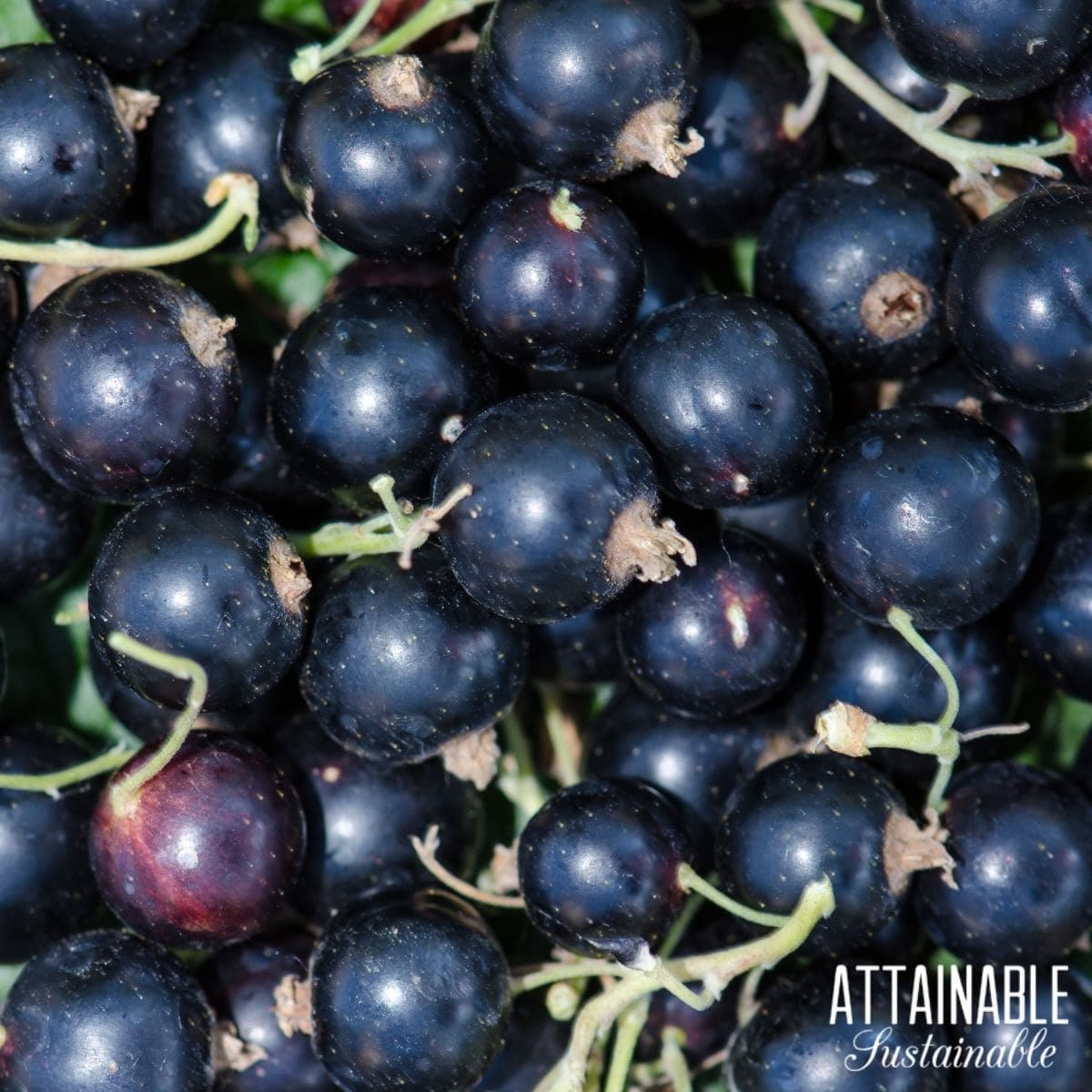
Growing currants
With all currant varieties, look for the first crop of fruits 1-3 years after planting. Flowers form early in spring, followed by berries beginning in June through August. The berries grow in grape-like clusters and range in taste from tart to sweet. Currants are high in vitamins, like C, and some minerals.
Grow Some Greens!
Ready to grow fresh greens, no matter WHERE you live? Sign up for my
FREE quick-start guide and start growing some of your own food!
Plan on growing currant bushes in a sunny spot where there will be room for the shrubs to grow, some can grow to 3-7 feet tall and just as wide. Currants can grow alongside other small fruiting shrubs like gooseberry and jostaberry (Ribes x nidigrolaria), which is an interesting cross between black currant and gooseberry.
Keep in mind that in some states, like North Carolina, currants can’t be planted because they attract plant diseases that affect other crops. Other states, like Massachusetts, allow for some types of currants, but not others. Be sure to check with your state’s department of agriculture before planting.
New to gardening? Limited on space? The 5-Gallon Garden gives you the skills you need to grow food in the space you have. Get started with your garden today!
Currant varieties for your garden
Select the currant varieties that meet your needs for hardiness, size, and the type of berries you prefer. When planting black currants, be sure to add a second type of currant that flowers at the same time to ensure good pollination and fruit production. An alternative is to plant self-fruiting cultivars.
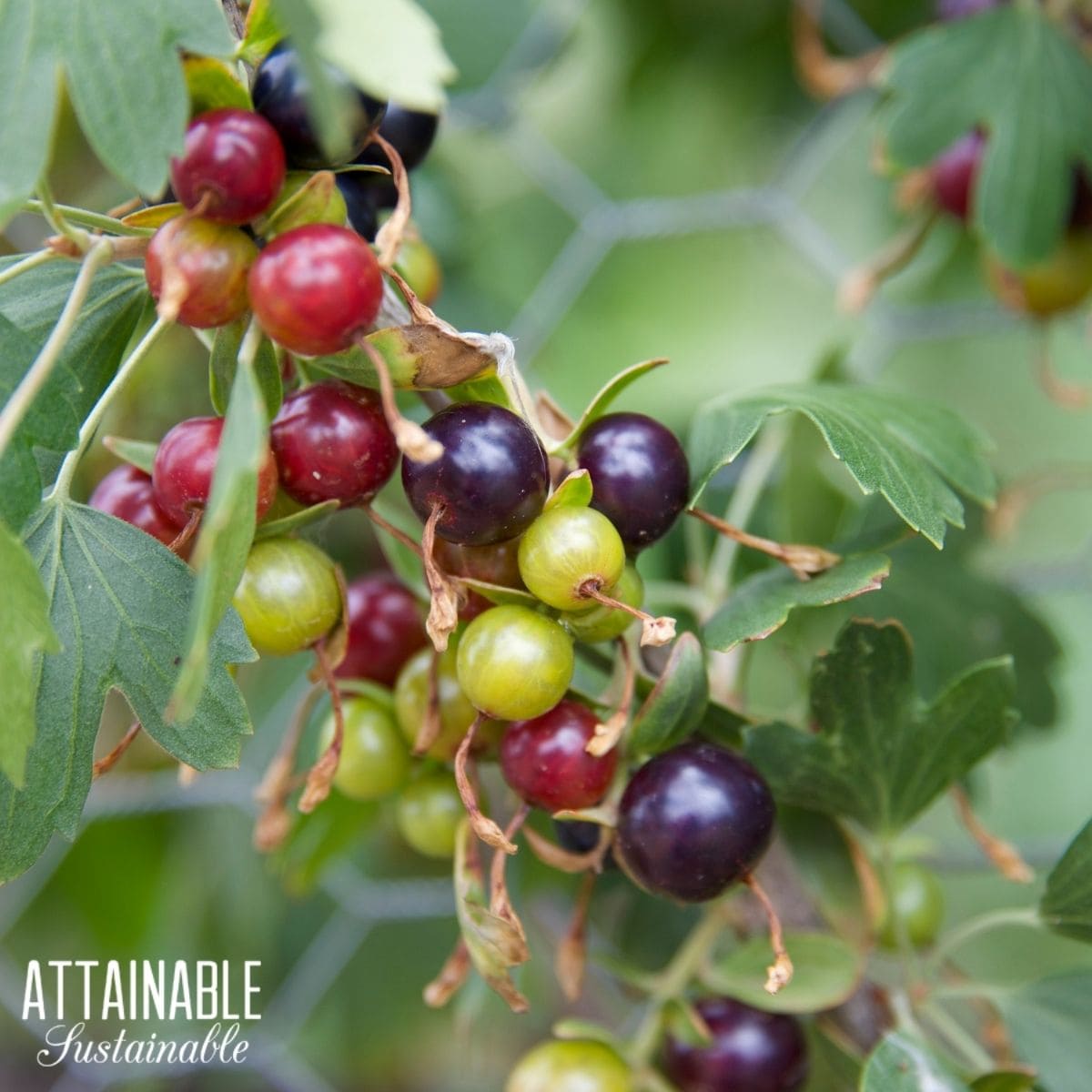
Growing currant varieties
Here are some of the most popular currant shrubs among gardeners:
Perfection Red currant produces exceptionally large red fruits that make the best jams and jellies. The bright red currants are juicy, have good flavor, and make for easy picking. (Zones 3-7)
Red Lake currant is one of the most widely grown red currant shrubs. The bright red fruits are attractive, ready to pick in mid-summer, and make a striking red-colored jelly. (Zones 2-7)
Consort Black currant is said to have a stronger flavor over red currants, so some gardeners prefer these for jams and preserves. (Zones 4-7)
Imperial White currant is a popular, old-fashioned variety for its white-to-pink clusters of fruit. These medium-sized currants have a mild and sweet flavor good for eating fresh or in preserves. (Zones 3-7)
Crandall Clove currant (Ribes odoratum) is a hardy native currant that’s known for the fragrant, fresh clove-like scent from its golden flowers. Currants start out yellow and ripen to dark blue (Zones 4-7).
How to plant currants
Plant and maintain current bushes like many ornamental garden shrubs. Wait until the soil is workable in spring and amend the soil with organic matter, like compost, to make sure clay soils drain well and sandy soil holds in some moisture.
Dig a planting hole slightly deeper than the shrub’s root ball by at least 1 inch. This planting method encourages a stronger root system. Lower canes can be covered with soil, up to a depth of 2-3 buds to build a bigger root system and store energy for developing new canes.
Plant currants at least 3 feet apart, depending on the variety. Allow more space if planting black currants.
Add a soaker hose or drip irrigation system, then mulch the planting area with straw, wood chips, dry shredded tree leaves or dry untreated grass clippings.
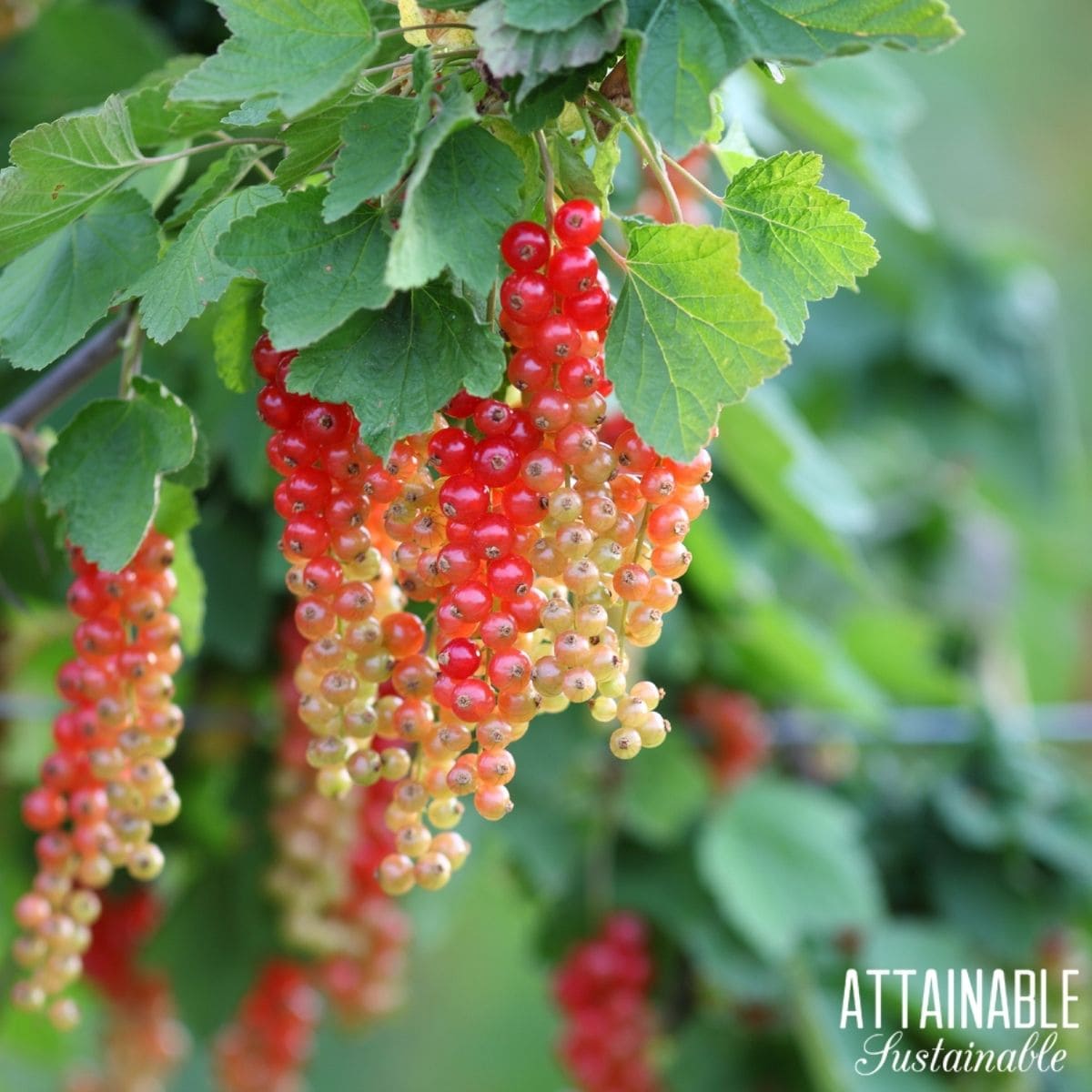
Planting currents
Requirements for growing currants
Soil requirements
Currants prefer fertile, loamy soil with good drainage. Like most ornamental shrubs, currants can benefit from a layer of organic mulch placed over the planting space, but away from the stem.
Light requirements
Plant currants in full sun to partial sun. If planting in partial sun, morning sun with afternoon shade is preferred to protect leaves from scorch.
Fertilizer and water requirements
Currants won’t need additional fertilizer the first season if the planting area was amended with compost prior to being planted. After that, a yearly application of a well-balanced fertilizer will help keep the shrub healthy.
Water newly planted shrubs regularly to encourage good root development. Keep soil moist, but not soggy. Once well established in the landscape, older shrubs won’t need as much water.
Prevent currant problems
Some ways to prevent problems when growing currants include the following:
Control weeds. Carefully remove weeds, especially around new plantings, with light cultivation to keep from harming roots that grow close to the surface. Weeds can compete with shrubs for water and light, plus they can attract insect pests to the garden. Go here for some natural weed control methods.
Prune annually. Currants benefit from annual pruning to remove old canes and open up the canopy. Each year, prune out canes that are broken, crossing, too skinny to produce fruit, and those that are more than four years old. Leave about 6 inches in between canes and keep those that are large and stocky.
Prevent powdery mildew. Powdery mildew is a foliar disease that can be prevented by giving plants room for air to circulate. Keep up good watering practices and water at the base of the plants. Water-stressed shrubs are more susceptible to mildew.
Growing currant shrubs in containers
You can plant and grow currants in containers under the right conditions. Be sure to use a large enough container to support the full-grown size of the currant you’re planting. The container needs drainage holes in the bottom.
Fill the container with a good quality potting mix meant for containers. Plant a little deeper than the shrub is in its container and keep the soil moist, but not soggy.
In areas of freezing winter temperatures, move the container to a protected area that will still receive some sun and moisture.
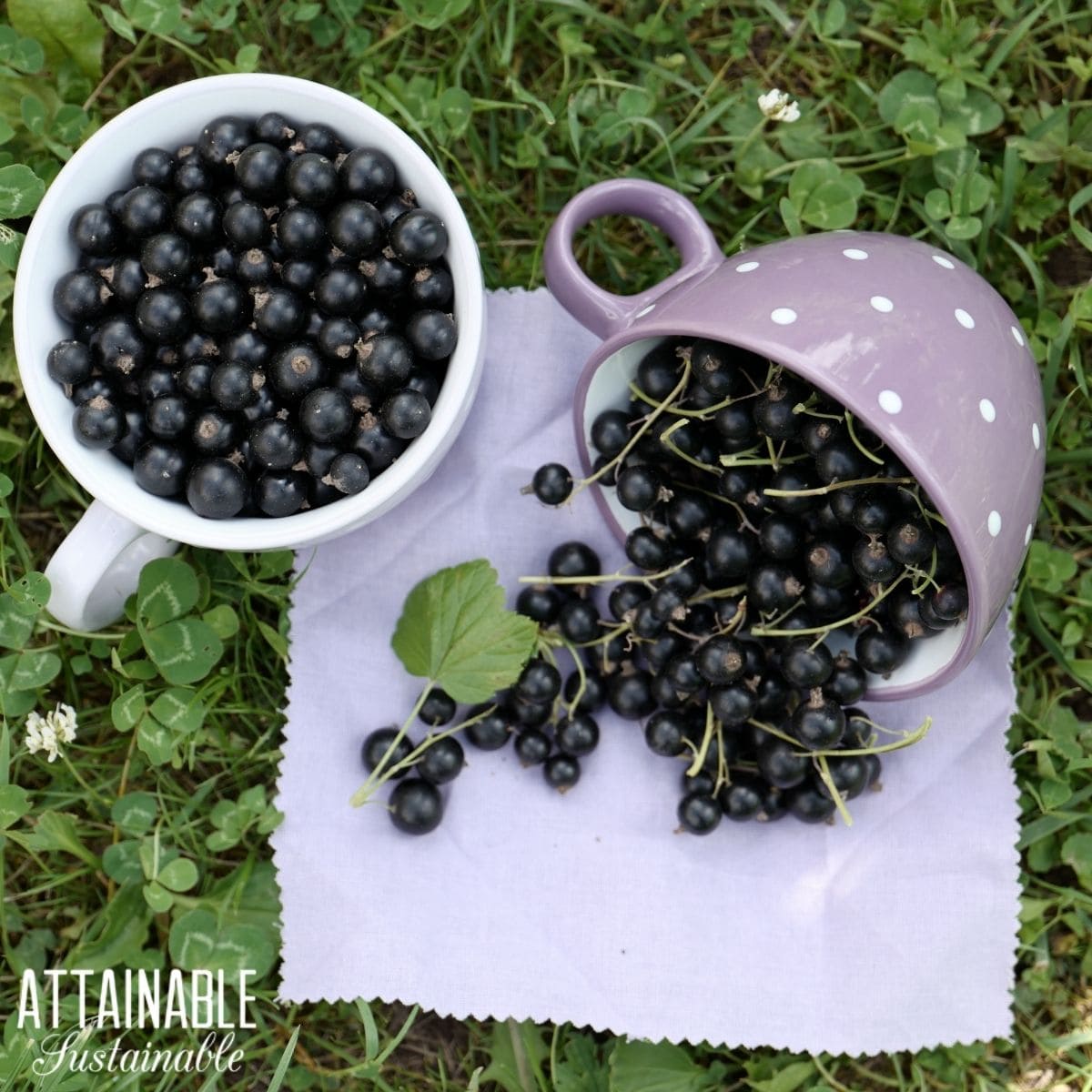
Harvesting ripe currants
How to harvest currants
To protect ripening fruit, use netting with a tight weave to protect the fruit from birds. Harvest currants when they are plump, juicy, the right ripe color for the variety, and without hulls. Keep in mind, some types of currants may not be as sweet as others.
To prevent tearing the tender skin of berries, harvest whole clusters carefully.
How to use currants in the kitchen
Use fresh currants in preserves, jams, and jellies or dry to use in baking like raisins. Fresh currants are good for eating out of hand, on top of fruit salads, or as a dessert sprinkled with sugar and doused in cream.
Use black currants to make a cordial, liqueur, or even wine.
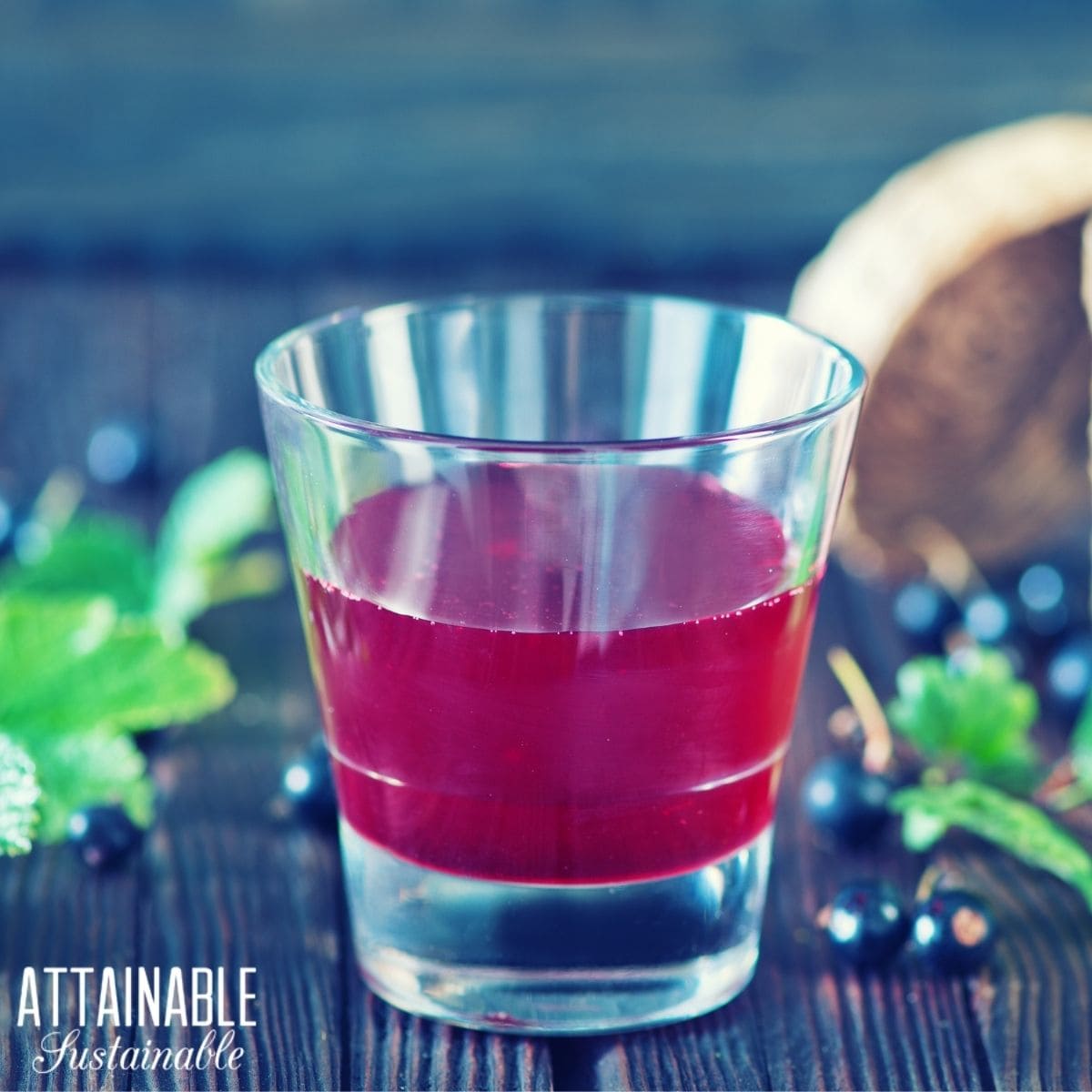
Black currant cordial
How to propagate currants
Some currant shrubs, like the clove currant, tend to spread underground and can send up shoots several feet away. Propagate other varieties from cuttings of year-old stems. If you purchased your currants from a nursery or garden catalog, you may have one or two-year-old plants, to begin with.
Ground layering is another method for propagating currants. This process works by growing new roots along stems that are still connected to the main plant. In spring, when currant stems are still flexible, select a branch, trim off all but a few of the top leaves and carefully bend the stem to the ground burying it several inches deep.
Hold the leafy tip above the ground and secure the remaining stem to the ground with bent wire, landscaping pins, or another method. Keep the soil moist and in a few weeks, roots will start growing so you can cut the new plant from the main stem and transplant it to another spot in your garden.






